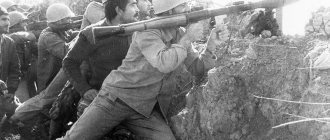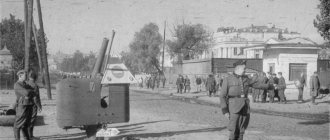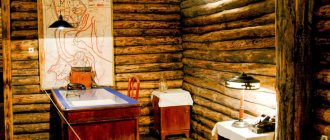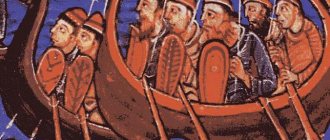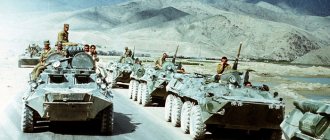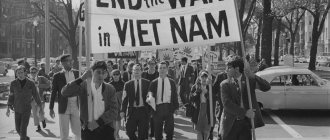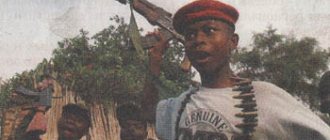Reasons for the battle
In 1866, Prussia defeated Austria, leading to the creation of the North German Confederation. It was led by King William I, although he was unable to annex the southern lands to his territory. The recreational French government prevented this. Emperor Napoleon III believed that a powerful German state could threaten his possessions. He did not take the Prussian army seriously, although it was able to defeat the Austrians.
The battle was supposed to solve several problems for Napoleon at once:
- weaken Prussia, which was gaining power;
- prevent the unification of German states;
- stop the revolutionary movement of France directed against the Second Empire.
Otto von Bismarck, who actually ruled the alliance, incited the French to war. He hoped for a quick victory and the creation of a powerful German state. But historians view Prussia’s plans as aggressive, because the ruler wanted to get Lorraine and Alsace, lands rich in minerals.
Both sides were looking for reasons for the war; no one believed in their defeat. The French were outraged by Spain's offer to a relative of the Prussian king - Prince Leopold of Hohenzollern was to take the throne of the country.
At first, negotiations between the ambassadors of Napoleon and Wilhelm were successful, but later Bismarck published the Ems dispatch in printed publications. This was the reason for declaring war. On July 19, 1870, Prussia received news from France - the state sent a proclamation of the start of the battle.
Sedan disaster and capture of Napoleon III
Bazin's attempts to break out of encirclement were unsuccessful. The French lost the battles of Mars-la-Tour, Saint-Privat and Gravelotte (August 16-18). Helmuth von Moltke used the current situation to his advantage. Having blocked Metz, he threw his best forces against the Chalon army and forced it to retreat to Sedan. On August 31, the French suffered another defeat at Beaumont. On September 1, Mac Mahon hoped to give the demoralized soldiers a rest, replenish supplies, and generally put the regiments in order. But on this day, at the Prussian General Staff, the commanders decided to impose a general battle on the French.
The Battle of Sedan began early in the morning. G. von Moltke chose a good time and place. The enemy's morale had already suffered greatly, MacMahon's soldiers were tired of the tiring marches, while the Prussians, on the contrary, were inspired by previous successes and rested; The French had almost nowhere to retreat: on all sides - either the Germans, or the Meuse River, or the Belgian border. The German corps began to tighten the ring around the enemy. By noon, in fierce battles, they did not allow the French to escape from this trap and completely blocked them. Under the crushing fire of Krupp's cannons, the desperate attacks of the French cavalry were choking, and ammunition was running out. Almost the entire Chalon army took refuge in Sedan in a few hours - about a hundred thousand soldiers and officers. The artillery shelling of the city broke the remnants of the French will to fight. The sunset had not yet begun when they surrendered to the mercy of the winner.
The French are in battle. (Spiegel)
Episode of the Battle of Sedan. (welt.de)
Napoleon III sent William I an offer to negotiate surrender. In the battle, the Germans captured 21 thousand people, and another 83 thousand surrendered to them in Sedan. The trophies also included 6 thousand horses, 549 guns and a thousand carts. The French lost about 3 thousand killed and 14 thousand wounded. Having met with William I, Napoleon III congratulated him on his new army and artillery. The emperor only asked that he be sent into captivity through Belgium - so that he, as a monarch, would not have to travel captive through his own country. Wilhelm I and Bismarck complied with this request. On September 3, Napoleon III and his retinue went into captivity to the palace of the Prussian king near Kassel (after the war the honorary prisoner was released).
Bismarck could now only say about Napoleon III: “The dynasty ends with him.” The second empire fell. On September 4, the Parisians deposed the emperor and established the Third Republic. The inglorious end of a ruler who owed his rise to his name. Friedrich Engels, even on the eve of the Battle of Sedan, summed up the reign of Napoleon III mercilessly: “The organization of the army turns out to be unsuitable everywhere; a noble and brave nation sees that all its efforts to defend itself are in vain, because for 20 years it has allowed its destinies to be controlled by a gang of adventurers who have turned the administration, the government, the army, the navy - in fact the whole of France - into the source of their personal profit "
The French general conveys to William I a proposal to surrender at Sedan. (geschichte-abitur.de)
Participants in the conflict
Although France was the first to declare war, it was unable to find allies. Napoleon had to prepare only his army, because he pursued a mediocre policy with European countries. Even Austria, after the defeat, did not dare to enter the battle a second time. Prussia had the support of other states:
- Southern Germany;
- Northern lands.
The Union army was superior to the French soldiers in everything: superior in number and level of training, quantity and quality of weapons. It was supplied by German factories, and Napoleon's soldiers had everything made of bronze. The extensive railway network allowed Prussia to quickly mobilize troops and transfer them to the front line.
If we consider Napoleon's plan briefly, he sent soldiers against the Bavarian Palatinate. So he was going to separate the German lands. And the French emperor also hoped that after the first successes, Italy and Austria would join him.
But the Prussian army was led by experienced and talented commanders - Helmut Moltke the Elder and Albrecht von Roon. They developed an action plan according to which the military could seize the Alsace and Lorraine lands, Paris, and also confront enemies if Austria joined the French.
general information
The war was the resolution of a deep political crisis between France and Prussia. Both sides had good reasons for starting hostilities. Chancellor Bismarck sought to complete the unification of the German lands into the Empire, which began during the Austro-Prussian War of 1866.
Prussia planned to take over Alsace and Lorraine, which was predominantly populated by ethnic Germans. Prussian military leaders managed to create a strong and efficient army . The Germans were superior to the French in manpower, artillery, discipline and combat training. Strategic and tactical planning was at its finest, led by the Chief of the General Staff of the Prussian Army, General Helmuth Johann Ludwig von Moltke .
Helmut Johann Ludwig von Moltke
Von Moltke's strategy consisted of a lightning-fast attack on Alsace and Lorraine, dissecting and defeating the main forces of Napoleon 3, pushing the French army to the border and capturing Paris.
France, in turn, sought to prevent the loss of territories and weakening of influence in Europe. Before the start of the war, Emperor Napoleon 3 tried to create an anti-German coalition together with Italy and Austria, but the negotiations were unsuccessful.
Napoleon 3
many problems in the army of the French Empire : the reorganization of the armed forces was not completed, the mobilization and supply of active units was poorly organized, and inaccurate maps of the area. At the same time, the French were more motivated and had an advantage in the number of small arms.
Bismarck and Napoleon 3 equally strived for a victorious war and fanned German-French national enmity in order to “teach a lesson” and punish their neighbor, glorify their weapons and strengthen power and influence.
French reservists during conscription
Start of the war
At the beginning of August 1870, the German army invaded France. She surrounded the French soldiers along with Napoleon. The emperor had to sign an act of surrender. This news shocked Paris; in September the population formed a rally and proclaimed France a republic for the third time. The provisional government of national defense began to govern the state.
The state decided to offer Prussia a truce followed by the conclusion of a permanent peace treaty. But the enemy put forward inflated demands, which the French considered humiliating. The war did not end there - the siege of Paris began. The provisional government managed to lead the German army south of the city, but it was afraid to convene the people to liberate the country, because the battle could develop into a civil one. France had to agree to Prussia's terms.
But the siege of Paris did not stop. The German army was constantly growing, and poorly prepared opponents could not resist it. In December, shelling of the city began, the French died not only from weapons, but also from cold and hunger. Each resident was given no more than 300 g of bread daily. All the trees were cut down to heat houses, and there was not enough money to buy food on the black market. Business activity and industry came to a standstill, which was a real disaster for Paris.
The townspeople were angry, because they saw the well-fed life of those who lived in rich neighborhoods. The common people blamed the government for their troubles, and uprisings began. After the ministers announced their desire to negotiate with Prussia, the National Guards captured them. From the defense of Paris, the head of government, Adolphe Thierry, switched to suppressing internal uprisings.
Siege and surrender of Paris
2 months after the start of the Franco-Prussian War, on September 19, 1870, the siege of Paris by German troops began. 132 days surrounded . During this siege, Strasbourg fell, and on October 27, Bazaine's army capitulated in Metz.
Paris was well fortified with ramparts, ditches and forts, and besieging a city of 2 million people was no easy task. The capital of France was surrounded by a group of troops of 70 thousand people , the headquarters of the German command was located in Versailles, the former residence of the French monarchs.
In Paris there was a small garrison of up to 50 thousand people and a people's militia of men aged 20 to 40 years. Parisians suffered from hunger, cold and disease. Prussian troops bombarded the city with heavy siege artillery for 3 weeks . The severity of the situation for the defenders of Paris was aggravated by the flight of part of the government from the city.
Main events of the Paris confrontation:
- During the siege of Paris, on January 18, 1871, a unified German Empire , and the Prussian King Wilhelm 1 was declared Emperor of Germany.
- On January 22, 1871, the residents of Paris started an anti-government riot , which was soon suppressed.
- On January 23, the act of surrender was signed and a truce was established for a period of 21 days. According to this act, weapons and fortifications were transferred under the control of the Prussian army, the Parisian garrison received the status of prisoners of war, and an indemnity was paid in the amount of 200 million francs .
The fall of Paris was the final chord of a gloomy military symphony. The Franco-Prussian War lasted 180 days during which France lost 800 thousand people . At that time, these were unheard of losses that completely demoralized French society.
Surrender of Paris
Defeat of the commune
The first socialist revolution in history was the uprising of the Paris Commune - a working class driven to despair by post-war poverty and hunger. It became the final event in the cycle of democratic rallies in France in the 19th century.
Accelerated industrialization and industrial development contributed to the impoverishment of small artisans. Women and children were taken into the factories and paid very little. And the experience and qualifications of most men were devalued due to the advent of machines. If the war had not started, there would not have been several bloody weeks in Paris. The population was dissatisfied with the activities of the authorities; they continued to strive for freedom and democracy. Thiers was suspected of restoring the monarchy.
The townspeople wanted to return self-government to the capital, and the National Guard acted as their defenders. In February 1871, the Republican Federation was formed, headed by the Central Committee. She became the main opposition to the government. A consequence of the lifting of the blockade was the cessation of payments to the National Guard. The meeting canceled the deferment on debt payments; in just a few days, the population was presented with more than 150,000 obligations.
By order of the government, they tried to capture the artillery of the guards, but the soldiers were stopped by a crowd of women who were standing in lines for bread. Lekonti Toma's generals nevertheless fell into the hands of the people and were shot. Thiers then ordered the evacuation of all ministers and wealthy citizens to Versailles, which greatly outraged ordinary Parisians.
Power was seized by the Central Committee of the National Guard, and elections of suitable people to the commune were scheduled for March 26. Relations between the government and the common people only worsened, all attempts at reconciliation were in vain. Thiers made it clear that the oppositionists were considered criminals; no one wanted to talk to them.
Franco-Prussian War 1870–1871
Franco-Prussian War
1870–1871
Bismarck's diplomatic unification of the German states around Prussia and the creation of a broad anti-French coalition came as a surprise to Napoleon III. Prussia's attempt to place Prince Hohenzollern on the Spanish throne threatened France with a war on two fronts. Napoleon, who mistakenly considered the French army to be invincible, decided to speed up the inevitable (in his opinion) onset of war. Bismarck's diplomacy contributed to this hasty decision.
1870, July 15. France declares war. This is followed by the hasty mobilization of the armies of both countries. The mobilization and concentration of troops in Germany is proceeding in an organized manner, according to a clear plan, with full use of railway communications for the transfer of troops. Mobilization in France is haphazard and incomplete.
1870, July, 31. Concentration of Prussian troops and their plan of military operations. Three well-equipped German armies with a total strength of 475 thousand are concentrated on the border along the Rhine. The First Army, 85,000 strong, under the command of General Karl F. von Steinmetz, is located between Trier and Saarbrücken; the second, 210,000 strong, under the command of Prince Friedrich Karl, is stationed between Bingen and Mannheim; the third, 180,000 strong, under the command of Crown Prince Friedrich Wilhelm, is located between Landau and Germersheim. The armies are nominally under the command of King William I, but in fact they are commanded by General Moltke and his brilliant General Staff. Prussian intelligence learns the complete battle plan of the French army. The goal of the campaign is the defeat of the French army in a general battle followed by the capture of Paris.
1870, July, 31. Concentration of French troops and their plan of military operations. In contrast to the Prussian army, the 114,000-strong French army, consisting of eight separate corps, is deployed along the border - from Thionville to Strasbourg - and is located in echelons based on the Metz-Nancy-Belfort fortress chain. The transportation of troops is poorly organized, the supply is even worse; units are understaffed. The headquarters of Napoleon III and his incompetent Minister of War, Marshal Edmond Leboeuf, are located in Metz. The only campaign plan is the popular cry “To Berlin!” French military intelligence does not exist. The command acts as if in a fog. Napoleon gives the order for a general offensive.
1870, August, 2. Battle of Saarbrücken. The firefight between units of the 1st German Army and the 2nd French Corps becomes an alarm signal for the French, notifying them that the enemy is nearby. Napoleon belatedly forms two armies: Alsace (from three southern corps under the command of Marshal MacMahon) and Lorraine (from five northern corps under the command of Marshal Achille F. Bazin). There is no single headquarters; both commanders make decisions independently, relying on corps headquarters.
1870, August, 4. Battle of Weissenburg. Early in the morning on the Loiter River, the Crown Prince's army, advancing in four columns, takes by surprise and defeats the leading division of MacMahon's corps. The other two French corps had not yet arrived; During the day one division approaches. After a fierce battle with superior enemy forces, French losses amount to 1,600 killed and wounded and 700 prisoners; German losses - 1550. McMahon retreats and concentrates troops on a forested plateau, turning his position towards the river.
1870, August, 6. Battle of Froeschwiller (Wörth).
McMahon's right flank repels German reconnaissance in battle. The Crown Prince regroups, strikes simultaneously on both flanks of MacMahon and concentrates his main forces against the enemy’s right flank, sending 150 cannons at him. The French cavalry launches several suicidal counterattacks, but cannot stop the advance. Under the cover of reserve artillery, McMahon retreats to Froeschwiller. Here he holds out until dark, and then retreats unhindered to Chalons-on-Marne (August, 7-14). The German army of 125,000 with 312 guns loses a total of 8,200 killed and wounded and 1,373 missing. The French 46.5 thousand with 119 guns loses 10,760 killed and wounded and 6,200 prisoners. The defense in the Vosges Mountains region has been broken, the path to Paris is open. The Crown Prince's army methodically advances towards the Meuse (Meuse) River. The tactical pattern of operations is becoming clearer. The French Chassepot rifles are superior to the Prussian needle muskets in accuracy and quantity of fire, but thanks to the erroneous replacement of cannons with mitrailleuses (machine guns), which make up about one-quarter of all French artillery, the latter is significantly inferior to the Prussian.
1870, August, 6. Battle of Spichern. The 1st and 2nd German armies advance towards Lorraine. Bazaine's army is dispersed into three parts that have no connection with each other. The French Second Corps of General Charles Auguste Frossard, repelling the attacks of Steinmetz and the corps of the army of Friedrich-Karl, holds the height of Spichern (southeast of Saarbrücken) for a whole day, until there is a threat of encirclement on both flanks. There is no help from Bazin. The French 30,000-strong corps loses 1,982 people killed and wounded, 1,096 missing. The German 45,000-strong corps loses 4,491 killed and wounded and 372 missing. The German army, drained of blood by losses, does not pursue the retreating French.
1870, August, 6-15. German offensive. Moltke gives the order to the 3rd Army to pursue the retreating MacMahon, and he himself, with the 1st and 2nd Armies, rushes after Bazaine on the most extensive section of the front. The mobility of the German vanguard does not give the French any respite. The Prussians wedge themselves between the two French armies and threaten to cut off Bazaine.
1870, August 12. Napoleon resigns as commander-in-chief. Shocked by the defeats of the French army, Napoleon renounces the post of commander-in-chief and goes to the Verdun fortress. Leboeuf is removed, his place is taken by General Charles G.M. Cousin-Montauban, Count of Palicao. Bazaine, having taken command of the reorganized Army of the Rhine, retreats to the fortress of Metz, while MacMahon regroups his troops at Chalons.
1870, August 15. Battle of Borin. The Prussian First Army forces Bazaine to retreat across the Moselle River. Bazin hopes to reach Verdun and join MacMahon's army. But the German Second Army cuts off his path to retreat by crossing the river at Pont-à-Mousson. Hoping to break through, Bazaine concentrates troops between Orne and the Moselle, turning south and leaving Metz on his left flank.
Mitrailleuse
1870, August, 16. Battles of Mar-la-Tour, Vionville and Resonville. At dawn, Frederick Charles, moving north from Verdun to Metz, encounters French troops. His lead corps attacks; the rest rush forward at the sound of cannonade. The attack of the French cavalry was repulsed with heavy losses for the latter. The Germans attack in their favorite way: they deliver a concentrated blow, then echelon after echelon introduce new units into the battle until the climax of the battle. Small cavalry skirmishes develop into a grand battle, and then into hand-to-hand combat, capturing infantry positions. The battle continues until complete exhaustion on both sides. Ultimately, Friedrich-Karl goes on the attack along the entire front and pushes the enemy back to Resonville. A series of battles merges into one protracted battle, the most difficult of the entire war. German losses amount to 17 thousand, French - 16 thousand. The next day, Bazaine, having lost hope of a breakthrough, retreats to Metz, deploys a 115 thousand army through the flank and takes a new position 10 km long with a front to the west, to the mountain range between the Moselle and Orna. The main forces of German troops numbering 200 thousand people, finding themselves between Bazaine's army and Paris, begin an offensive, leaving one reinforced corps east of Metz.
1870, August, 18. Battle of Gravelotte - Saint-Privat. Moltke, personally participating in the operation, attacks Bazaine, throwing the main forces of his Second Army against the enemy’s left flank. The key point of the battle is the fortified village of Saint-Privat-la-Montaigne. Friedrich-Karl sends the Prussian Guard to storm the village (which is defended by the Sixth Corps of Marshal Canrobert). From early morning until dusk, Canrobert's 23,000-strong corps heroically repelled the onslaught of a 100,000-strong German army. Meanwhile, Bazin does not respond in any way to his requests to send reinforcements. Then a Saxon corps enters Roncourt (north of Saint-Privat), encircles the French flank and threatens their rear. After the battle for each village house, Canrobert with the remnants of the corps retreats to Metz. Meanwhile, another battle is being fought on the German right flank. Two German corps are stretched out, marching along the road leading east from Gravelotte. Entering the gorge, they fall into a French trap. Attempts to break through are unsuccessful; panic begins. Disorderly crowds of soldiers retreat west through Gravelotte. The brilliant French counterattack was stopped only thanks to the timely arrival of the artillery of Prince Hohenlohe-Ingelfingen and the personal leadership of Moltke, who brought up fresh troops and prevented the complete defeat of the retreating German army. At the end of the night, Moltke receives a message about the victory at Saint-Privat. If Bazin had launched a counterattack in time, being in his previous disposition, he would have had the opportunity to break through the Prussian lines. However, he continues to be inactive, having completely lost contact with the corps commanders. Moltke, who was waiting for a French counterattack, which never took place, surrounds the enemy positions along the entire perimeter.
1870, August, 21–18. McMahon's offensive. Meanwhile, MacMahon receives a categorical order from the government to march from Chalons to the aid of Bazaine with an army of 120,000 and 393 guns. All his actions are widely covered by the French press. Emperor Napoleon III himself is at his headquarters. McMahon unwisely chooses the northern route, which then requires turning east. Moltke accepts the challenge. While the German 1st Army and part of the 2nd under the command of Friedrich-Karl besiege Metz, the rest of the 2nd Army, called the Möz, under the command of the Saxon Crown Prince Albert, moves west to join the 3rd Army of Friedrich-Wilhelm , which quickly crosses the Argonne Forest, blocking McMahon's path.
1870, August, 29–31. Battles on the Meuse. MacMahon moves part of his army across the Meuse at Douzy. The Prussian Meuse army, advancing on both banks of the river, after fierce battles near Noir (August 29) and Beaumont (August 30), pushes the French north to Sedan. Another battle at Bazeya (August 31), in which MacMahon was wounded, forces the French into a bend in the river near Sedan. And this time the Prussians wedge themselves between the French army and Sedan. The Crown Prince, arriving from the southeast through Vadlincourt and Donchery on the left bank of the Meuse, crosses the river along pontoon bridges and moves deep into the plain north of Sedan, completing the flanking of the French army. Meanwhile, Frederick Charles's army repels Bazaine's half-hearted attempts to break out of Metz (August 31).
1870, September, 1. Battle of Sedan. General Auguste Ducrot, who took command instead of MacMahon, finds himself surrounded by Moltke's 200,000-strong army, pushing him from the south, west and east; Ducrot's rear is turned towards the Belgian border. The French cavalry, which attempted a breakthrough, was scattered by Prussian infantry fire; Meanwhile, 426 German guns, located in a semicircle on the heights in the vicinity of Sedan, bombarded the French positions throughout the day. The German cavalry attack was repulsed by French machine gun fire (mitrailleuse). Having failed in an attempt to break through to the northeast, Ducrot tried to attack south in the afternoon, but was unsuccessful. By five o'clock in the afternoon it's all over; The French army accumulates in the city and fortress under heavy enemy fire. General Emmanuel F. de Wimpffen, who took command from Ducrot, tries to convince Napoleon to personally lead the final attack, but he refuses to sacrifice soldiers, comes out with a white flag and surrenders to the King of Prussia as a private citizen. Then Wimpffen with the remnants of the army (83 thousand soldiers and 449 guns) capitulates. French losses amount to 17 thousand, German losses - 9 thousand.
1870, September. German attack on Paris. It seemed that the war was over. Half of the French army is captured, the rest are blocked in Metz. The last stronghold of the French army are the fortresses located along the eastern border, of which the most important are Strasbourg, Verdun and Belfort. The German army is constantly replenished with reserves. While the 1st and 2nd armies tighten the iron ring around Bazaine in Metz, the 3rd and Meuse armies move towards Paris. However, an unprecedented patriotic upsurge is taking place in France.
1870, September, 4. Third Republic. A popular uprising breaks out in Paris, overthrowing the empire. A provisional government is formed, the ideological leader of which is Leon Gambetta, and the president and military governor of Paris is General Louis Jules Trochu. Trochu strengthens Paris and hastily recruits an army of 120,000 (from veterans, reservists and 20,000 marines), an 80,000-strong corps of the so-called flying guard (from young people under 30) and a 300,000-strong national guard (extremely excitable and anarchic). tuned crowd of people from 30 to 50 years old).
1870, September 19. Beginning of the siege of Paris. Moltke is not going to destroy his soldiers by sending them to storm two belts of strong fortifications. The Germans carefully build their fortifications around the city. King William of Prussia moves his headquarters to Versailles. Moltke is about to starve out the giant city, but to his amazement he discovers that his lines of communication are constantly being attacked by franchisors
(partisans), and a new French army is formed in the Loire Valley. Gambetta, who fled the capital in a hot air balloon (the only means of communication with the outside world), organizes a nationwide resistance centered in Tours (October 11), where the provisional government functions. Moltke is torn apart, commanding two sieges, field operations and counter-partisan warfare along an entire line of communications that greatly reduces the effectiveness of the German war machine.
Krupp gun
1870, October 27. Fall of Metz. Bazaine's 173,000-strong French army capitulates after a 54-day siege due to the commander's indecisiveness and hunger rather than military action. After the end of the war, Bazin is tried by a tribunal, found guilty of treason and imprisoned.
1870, October – December. French initiative. Moltke immediately sent the veterans freed after the siege of Metz into a large-scale campaign against the untrained French army in the valley of the Loire and Sarthe rivers, which had made several bold but unsuccessful attempts to break through to besieged Paris. Fighting continues throughout the winter; German communications are subject to constant attacks by partisans.
1870, October – December. Military operations around Paris. Despite the famine in besieged Paris, Trochu's troops make forays from time to time. The defense of Paris is complicated by the mutiny of the National Guard soldiers (October 31). Two major forays to break the siege (November, 29–30 and December, 21) begin successfully, but end in nothing.
1870, November, 9. Battle of Kulmier. The victory of French troops over the Bavarian corps forces the Germans to leave Orleans, but the further French offensive stalls after the introduction of Prussian reserves.
1870, December, 2–4. Battle of Orleans. A two-day fierce battle between the French Army of the Loire under the command of General Louis J.B. d'Oreille de Paladin and the army of Frederick Charles ends with the victory of the Prussians and their recapture of Orleans. Meanwhile, General Charles D.S. Bourbaki hurries east to the besieged Belfort, and General Antoine F.A. Chanzi and the remnants of the Loire army are engaged in protracted battles with significantly superior enemy forces.
1871, January. Campaign in the North. General Louis L.C. Faedherbe holds back German attempts to pacify Northern France at the Battle of Alluey (December 23). Then, in the long battle of Beaupaume (January, 2–3), he defeats the corps of General August Karl von Goeben, but von Goeben takes revenge in the battle of Saint-Quentin (January, 19). Faderbe retreats in an organized manner and defeats the pursuing vanguard. He quickly regroups his troops and prepares for a new offensive. This worries the German command, already taken by surprise by the unexpected successes of the resistance in remote provinces.
1871, January, 10–12. Battle of Le Mans. In the Loire Valley, the Germans repulse a desperate attempt to attack from Chanzy. The unreliability of the troops forces Chanzi to retreat to the west, but not to lose the intention of launching a new offensive on the Loire.
1871, January, 15–17. Battle of Belfort. Far to the east, Belfort remains the last strong French fortress with a garrison still holding out. Bourbaki with a completely unprepared 150,000-strong army advances on the 60,000-strong corps of General Karl Wilhelm F.A.L. Werder to distract him from the siege of Belfort and force him to defend. He attacks Werder positions on the Lisena River, within cannon range of the fortress. Due to Bourbaki's mediocrity and the incompetence of his assistant Giuseppe Garibaldi (this time fighting for French independence), the French are defeated after a three-day fierce battle. The Germans lose 1,900 soldiers, the French more than 6 thousand. Bourbaki makes an unsuccessful suicide attempt, is removed from command and replaced by General Justin Clenchan. With the arrival of the German reserve army under the command of General Edwin von Manteuffel, Clenchamp, whose rear faces the Swiss border, finds himself sandwiched between two armies. With an army of 83,000, he crosses the Swiss border to Pontarlier, where he receives a warm welcome (February, 1).
1871, January 26. Truce in Paris. The third and final attempt by the Paris garrison to break the siege ends in complete defeat when the National Guard begins treacherously shooting their comrades in the back (January 19). The hopes of the defenders of Paris for liberation are crumbling, people are starving. At Trochu's suggestion, a truce is concluded.
1871, January 28. Versailles Convention; capitulation of Paris. Regular units of the Paris garrison and the Flying Guard are declared prisoners of war; the forts in the vicinity of Paris are occupied by the Prussians. At the request of the French (as it turns out later, unreasonable), the terms of the peace agreement do not include the disarmament of the national guard, which in theory should perform police functions and maintain order in the city. The winners enter Paris in triumph (March 1).
1871, January – February. Undefeated Belfort. The commandant of the fortress, Colonel Pierre M. P. A. Danfer-Rochereau, has been holding the defense since November 3, 1870. Being a military engineer, he served in the garrison of this ancient fortress for six years. Using existing structures, he strengthens the outer line of defense and successfully defends Belfort with a garrison of 17,600, mainly consisting of flying and national guards. The Germans manage to break through the outer line of fortifications only at the end of January, but at the same time they find themselves under fire from the citadel batteries and advance extremely slowly. Danfert-Rochereau surrenders the fortress only by categorical order of the French General Assembly in Bordeaux (February 15). The garrison leaves with military honors - with weapons, artillery and banners. During the 105 days of the siege, the French lose 4,800 people (of which 336 were civilians killed during shelling). German losses amount to 2 thousand. The defense of Belfort becomes a heroic event in the history of the French army.
1871, May, 10. Peace of Frankfurt. France gives Alsace and North-East Lorraine to Germany, and also pays an indemnity of 5 billion francs (a billion dollars). The German occupation authorities remain in France until the indemnity is paid.
Results of the battle
229,000 people took part in the elections, although 485,000 were on the lists. Of the 86 people who got into the commune, twenty resigned almost immediately. And so we had to hold a second round on April 16. The deputies were different - famous revolutionaries and cultural figures, as well as ordinary doctors, journalists and officials. Everyone had different political views, which made the work of the commune more difficult.
The next few generations of revolutionaries fought for various changes in the rule of France. Power was no longer divided into three branches, the common population was armed instead of the army, and the democratization of the state apparatus appeared. Labor became more organized: control appeared at enterprises, accounting tables were kept, worker cooperatives were created, and training became mandatory . Some actions of the commune proved useful to the population:
- liquidation of rent arrears;
- cancellation of night shifts in bakeries;
- return of items worth up to 20 francs from pawnshops;
- the appearance of a deferment on commercial lending.
The war with Versailles continued, the goal of the Communards was the final overthrow of the government. The date of the first serious clashes was April 1871, but the turning point came a month later. To Thiers, the German army returned captured French soldiers and weapons, so from May 21 to 28, his army brutally dealt with the opposition in Paris.
During the battle, all the hatred of the opponents manifested itself - they killed their enemies without pity. It didn't matter whether they were relatives or friends, only political views were considered. Buildings of architectural and cultural value were burned. The power of the Commune fell after 72 days of rule.
The stubbornness of the common people and politicians cost France dearly. The country was already suffering after the defeat in the Franco-Prussian War. But the characterization of the actions of the Commune and the government is ambiguous: for some part of the population these events are remembered as a triumph of democracy and freedom, while others consider these days tragic.
Fighting
By the end of July 1870, both sides of the conflict mobilized and brought up artillery and supplies to the demarcation line. However, the quantity and quality of troops and equipment were not equal. After mobilization, the French army numbered a little more than 500 thousand people , and the German states were able to field twice as many soldiers and officers. The Krupp steel cannons were superior in range and rate of fire to the French bronze cannons. At the same time, the needle guns of the French infantry were superior to the small arms of the Prussian army. Training, combat training and coherence were much better in the army of the German states.
The command of the French army, understanding the weaknesses of its troops, planned to conduct a rapid offensive to the northeast of Strasbourg with the aim of dissecting the united German group. However, the deployment of the French corps was slow and lagged behind the command plans. Supply units were late and the troops did not have enough food. As a result, Napoleon 3 had to postpone the offensive .
